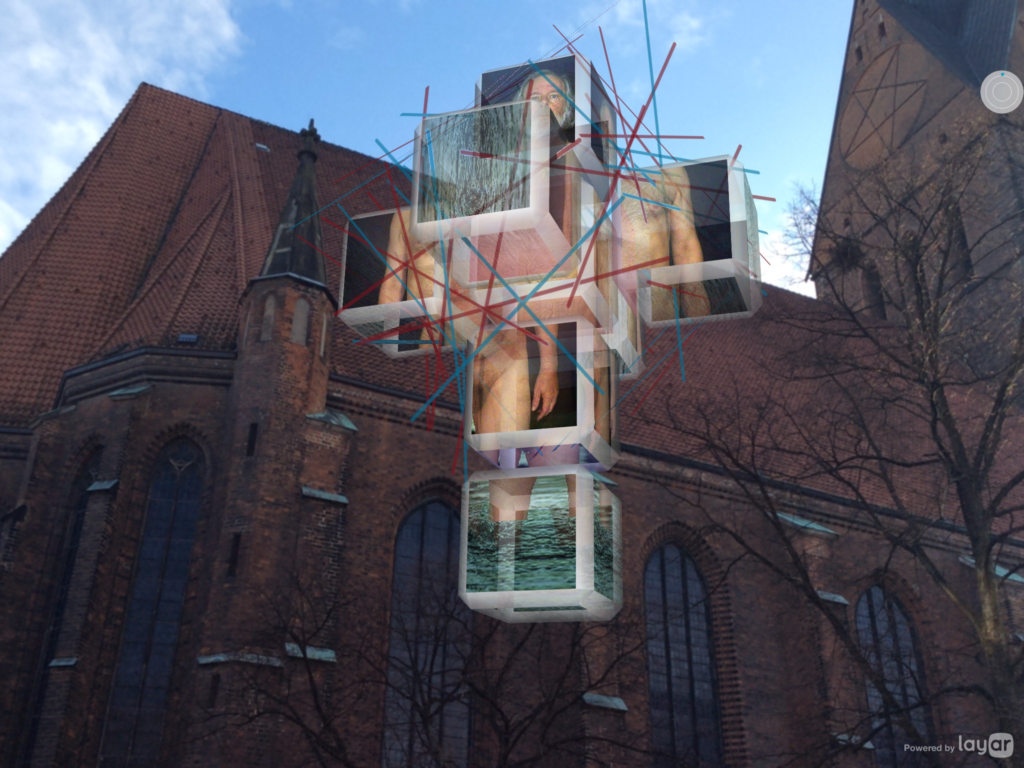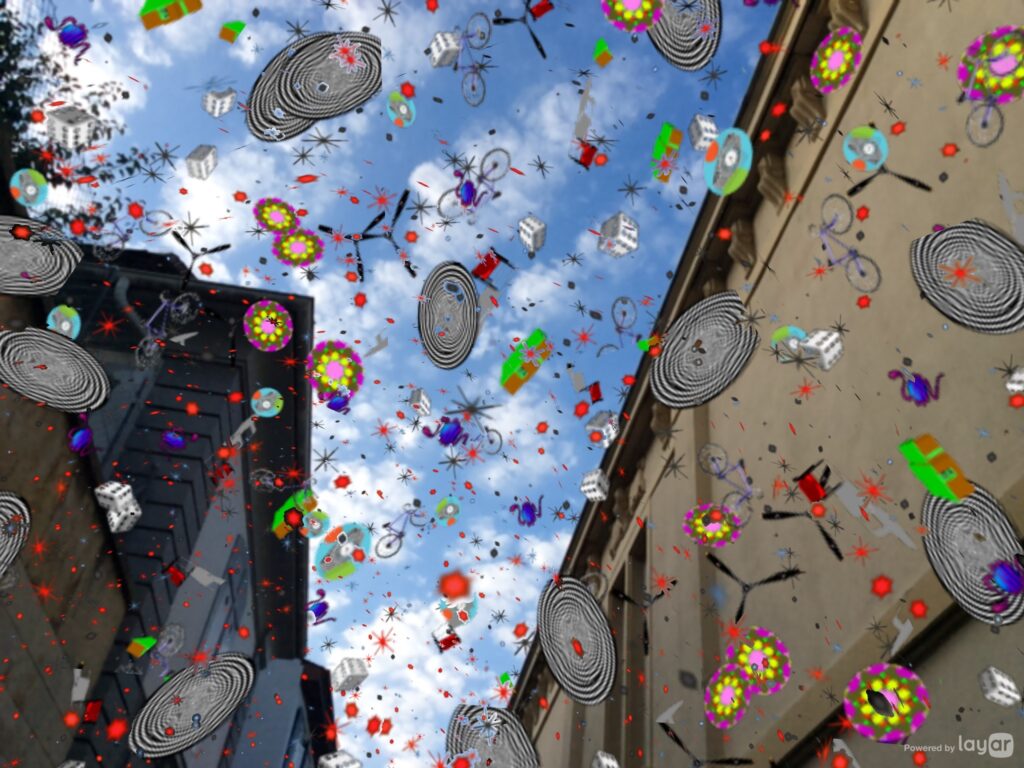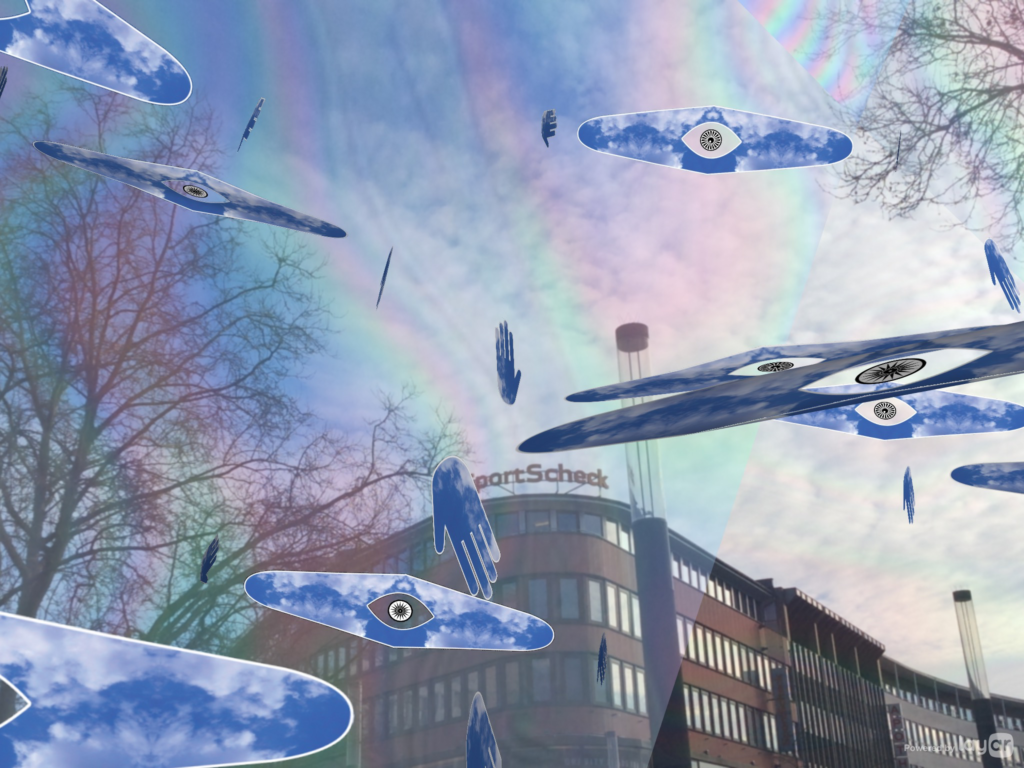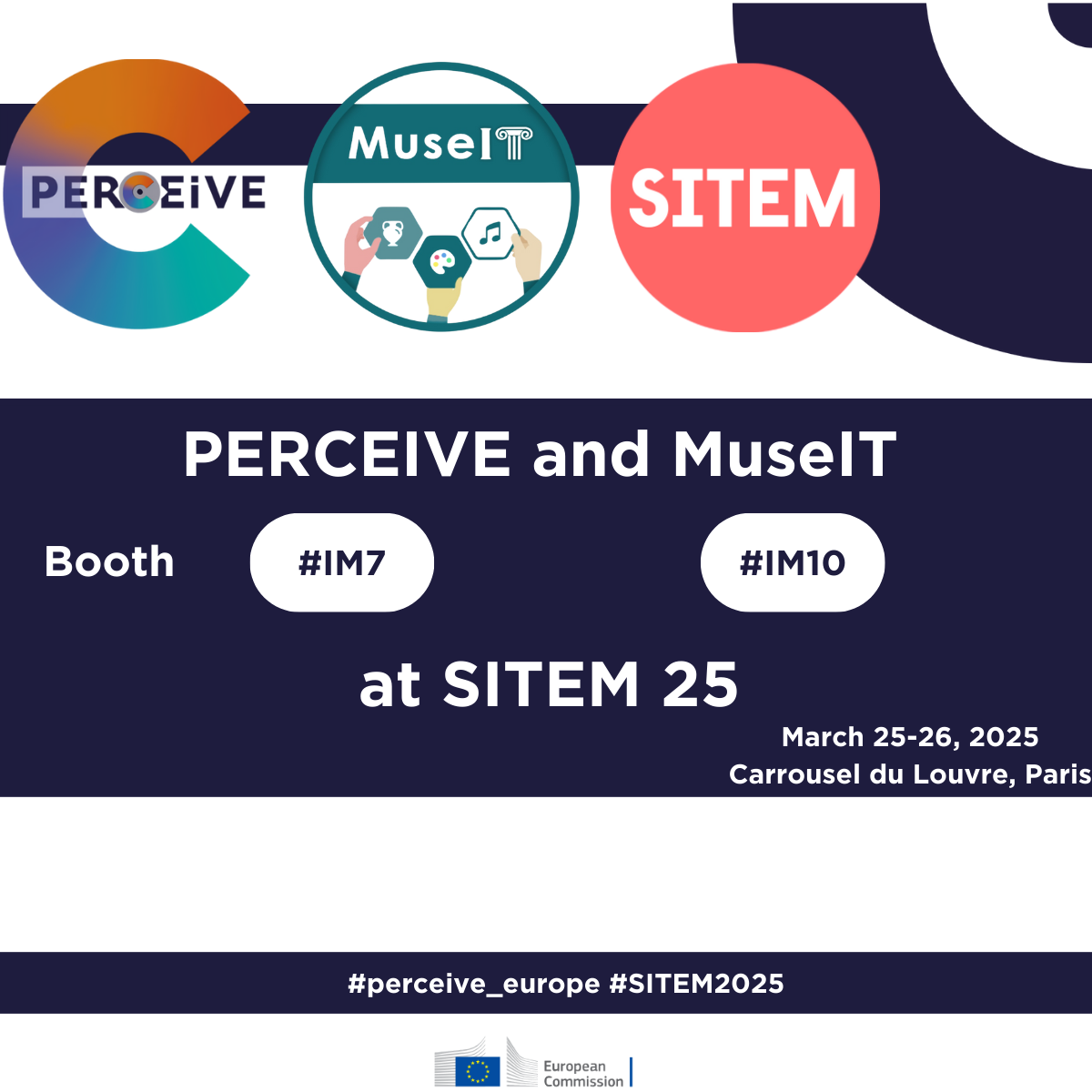Introduction
The PERCEIVE project under the Horizon initiative is dedicated to enhancing our perceptual understanding of colorful collections through the utilization of emerging technologies. Its primary objective is to pioneer novel avenues for perceiving, safeguarding, curating, exhibiting, comprehending, and accessing collections of colorful Cultural Heritage as well as contemporary digital artworks to foster renewed engagement.

Fig. 1. Screen Shot of Ecco Homo by Ingo Lie and Arthur Clay, iJacking Festival, Hannover 2017
By presenting case studies that spotlight artworks conceived in the digital realm and intrinsically linked to the technologies of their inception, the project’s scope broadens to encompass current cultural expressions. This framework invites a fresh perspective on the genesis and perpetuation of modern art, as well as the dynamic roles assumed by artists and conservators in preserving an ongoing cultural narrative and safeguarding its historical continuity.

Fig. 2. Screen Shot of Dose by Will Pappenheimer, Virtuale Switzerland Festival, Basel 2014
Preservation
The challenge of preserving digital art has been a recurring issue across various artistic mediums. However, when it comes to electronic and digital arts, the question arises whether a viable strategy exists for conserving such artworks. The answer is nuanced: while some can be preserved, others cannot. This dilemma stems from the inherent dependency of electronic arts on the continued availability of the equipment used for creation and display, or on the artist’s provision of adequate information to recreate the work using contemporary technology, bypassing obsolete equipment.

Fig. 3. Screen Shot of Butterfly Lovers by Lilly & Honglei, Virtuale Switzerland Festival, Basel 2014
As the process of recreating or updating electronic artworks is both costly and time-consuming, a significant number of these pieces may not undergo preservation, leaving only a handful to endure. Among the surviving works, there’s no assurance that those deserving of conservation will find refuge within museum archives or collectors’ collections, and their visibility to the public remains uncertain.
Beyond the technical survival aspect,Marcel Duchamp highlights a more profound issue in his essay “The Creative Act,” stating that “although the artist may shout from all the rooftops that he is a genius, he will have to wait for the verdict of the spectator in order for his declarations to take on social value, and ultimately for posterity to include him in the annals of art history.” However, one must also then pose a more troubling question: What if the technology’s lifespan is so brief that the artwork never even reaches the relevant arenas to secure a verdict?

Fig. 4. Screen Shot of The Coming of a New Dimension, Arthur Clay, iJacking Festival, Hannover 2017
Life Line
An artwork made of stone can endure for over a thousand years, while a painting might last a few hundred years. However, electronic arts have a much shorter lifespan due to their reliance on technologies that become irreparable, obsolete, or unavailable.
This situation raises the profound question of whether preserving digital art is meaningful. Yet, the consequences of not preserving it are equally nonsensical, as it’s crucial to maintain a historical record of each generation’s cultural expression. Neglecting this leads to enduring cultural gaps that can never be filled, ultimately resulting in the loss of history itself

Fig. 5. Screen Shot of The Ascension of Cod by Will Pappenheimer, iJacking Festival, Hannover 2017
Considering that a masterpiece in any medium is not often recognized in its era but rather judged by subsequent generations, it’s essential to remember that enduring recognition is a gradual process. A masterpiece emerges after it withstands the scrutiny of time.
However, the fact that a masterpiece is determined over generations highlights the unfortunate reality that an artwork must survive through time. If its lifespan is too short— as is the case with electronic media—survival becomes improbable.
Conclusion
In conclusion, focusing on the conservation of electronic art within the digital age presents an expanded scope for conservation practice. The time-sensitive nature of electronic artworks, coupled with their relatively shorter lifespan compared to traditional media, underscores the urgency of addressing preservation challenges. Should conventional preservation methods prove insufficient, adopting a role as consultants rather than sole conservators offers a viable alternative.
This approach involves close collaboration with electronic artists, enabling them to navigate the inherent limitations of their medium and make informed decisions during the creative process. Strategies such as comprehensive documentation for technology migration and the creation of technology-independent iterations emerge as valuable tools in this endeavor. By embracing these innovative approaches, we can ensure the enduring legacy and appreciation of electronic art in the face of evolving digital landscapes.


